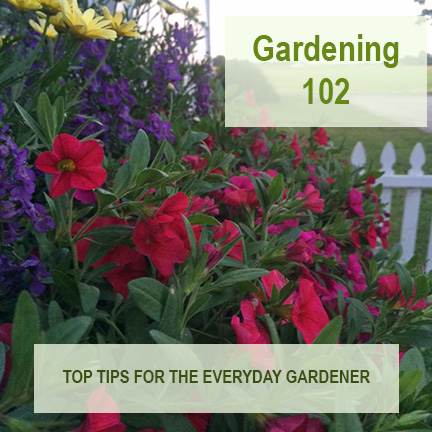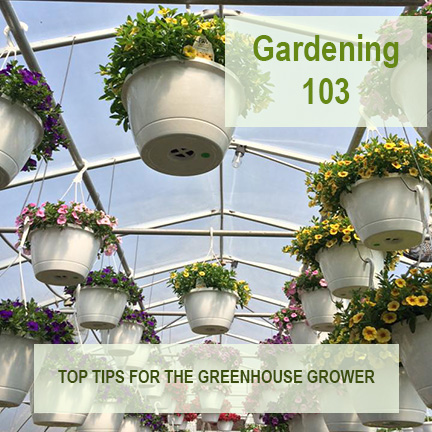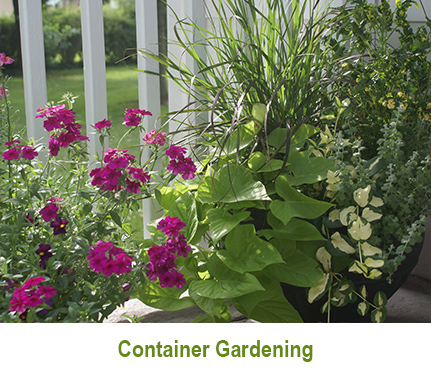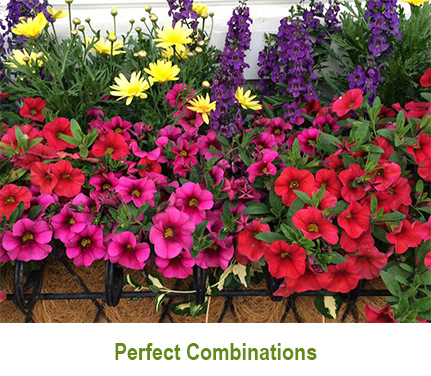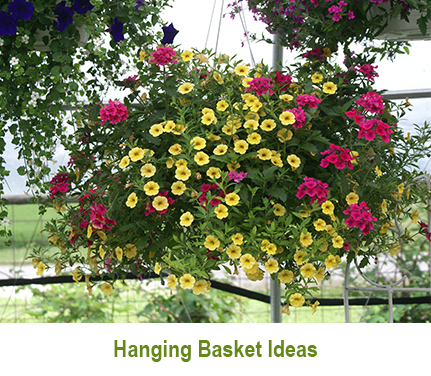Gardening 101
Tips for the beginner gardener 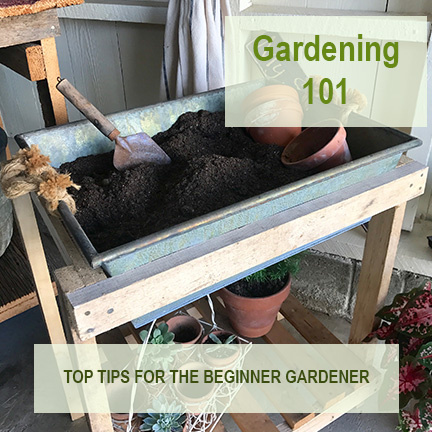 It's never too late to begin gardening! Connecting yourself with nature has many benefits. Studies show that gardening can decrease the risk of stroke and heart attack by 30%, reduce the risk of dementia up to 36%, improve mobility and weight control through exercise, reduce stress significantly, help with depression, anxiety and mood swings. The best produce you can eat comes from your own backyard and flowers around the home add pure joy. Below are 7 tips for beginner gardeners. If you have been gardening for a while you may want to move forward to Gardening 102 - Tips for the everyday gardener or Gardening 103 - Tips for the greenhouse grower.
It's never too late to begin gardening! Connecting yourself with nature has many benefits. Studies show that gardening can decrease the risk of stroke and heart attack by 30%, reduce the risk of dementia up to 36%, improve mobility and weight control through exercise, reduce stress significantly, help with depression, anxiety and mood swings. The best produce you can eat comes from your own backyard and flowers around the home add pure joy. Below are 7 tips for beginner gardeners. If you have been gardening for a while you may want to move forward to Gardening 102 - Tips for the everyday gardener or Gardening 103 - Tips for the greenhouse grower.
#1 Start with easy to grow plants
01 - If you are a beginning gardener, it may be best to start with easy to grow plants. Try to choose plants that are low maintenance and easy to grow. Starting with annuals rather than perennials is reccommend. Once you have the hang of it, move forward with plants that require more maintenance.
02 - I recommend starting with plants such as zinnias, marigolds, geraniums, flowering vinca, asparagus fern, vinca vine, rudbeckia, dragon wing begonias and tomato plants.
03 - If you would like to start with some perennials you may want to try black eyed susans, daylilies, hostas, cone flowers, perennial geraniums, monarde or salvia
#2 - Containers
01 - If planting in a container, be sure the container is a suitable size for the plant. Check the plant label to see how vigorous the plant is. The more vigorous the plant is, the larger the container should be.
02 - Stay away from very small containers! They do not have much room for root growth, and more importantly, they dry out very quickly.
03 - Proper drainage is very important. Make sure your containers have holes in the bottom so water can drain as needed. If you have a planter that does not have drain holes, add a couple inches of gravel in the bottom of the container. If a plant is overwatered, the water will sit in the rocks rather than the soil. Never sit a container without drain holes were it is exposed to rain.
#3 Soil
01 - When planting in containers, choose potting soil that is light weight and does not dry out quickly. A good potting soil will be light and fluffy, drain well and hold just enough moisture for the roots. At Smiths Country Gardens, we sell and recommend a professional 360 Metro Mix by Sun Gro.
02 - Soil that is very heavy is either too wet or has sand in it. Some plants will not do as well as others in sandy soil.
03 - Never fill your containers with soil that is too wet. It is best to fill containers with dry soil and then add water after you position the plants. Soil that is too wet may cause the roots to rot or mold to develop in the soil.
#4 Location
01 - Pay attention to the amount of sun and shade areas are receiving. Read the label to see if a plant is suitable for the location you desire. Placing a plant in the wrong location will not allow it to thrive properly.
02 - Know what hardiness zone you live in. The United States Department of Agriculture Hardiness Zone Map is a guideline for gardeners and growers to determine which plant will survive in their location.
#5 Watering
01 - The number one mistake that most individuals do that eventually kills their plants is improper watering. The vast majority of plants want to be watered every day weather young or mature. The key is how much water to give them. Many factors must be taken into consideration when it comes to that question, such as the following: The size of the plant, the type of plant, the size of the container, the environment and the forcast.
Size of plant
- Seedlings need to be misted two to three times per day
- Young plants only need enough water to surround the root area
- Mature plants need more water since the root area is larger.
Type of plant
- The typical plant does not want to go completely dry
- Research the plants watering needs
Size of container
- Small containers require more waterings
Environment & forcast
- Plants located in full sun require more water
- Plants located in more shade require less water
- Plants require less water on a cloudy day
- Plants may require more water on a windy day
- A plant with large leaves may not allow enough rain water to reach
the soil during a light rain
- Plants may need watered twice a day on extreme hot sunny days
02 - Check your plants every day to see if they need water. Touch the soil to see if it is dry. If the soil is wet and soggy then wait until the next day and check it again. If the soil is just barely damp it most likely needs water. If the soil is dry it needs to be watered thoroughly.
03 - Monitor your plants carefully on extreme hot sunny days. Visit the video page for watering tips.
#6 Fertilize regulary
01 - Plants need fertilizer (food) to achieve maximum health and beauty. Proper nutrients in the soil is the key. Most potting soils do not have enought nutrients to supply plants the entire season. Add water soluble fertilizer to give the plant the nutrients it needs.
02 - Use a good quality fertilizer and for best results fertilize weekly.
03 - Fertilize the soil, not the plant. Fertilizer can burn the leaves so try to pour it directly onto the soil. If you get some on the leaves, mist it off with water.
04 - Well fertilized plants will have brighter vibrant foilage and blooms. If your plant looks pail or light in color, it may need fertilized.
#7 Deadhead (keep them clean)
01 - Cut dead blooms and foilage off of your plants. Keeping plants cleaned up, improves both appearance and the overall health.
02 - Dead blooms and foilage take energy from the rest of the plant. Removing them will help the plant produce new growth.
03 - Some plants may require lots of cleaning, while others need very little. Some plant labels will not give this information, therefore researching plant care may be needed.
04 - A plant that requires a lot of deadheading will be less overwhelming if you deadhead every few days.
Contact Us
Copyright Smiths Country Gardens LLC. All rights reserved
- Articles View Hits
- 347819

